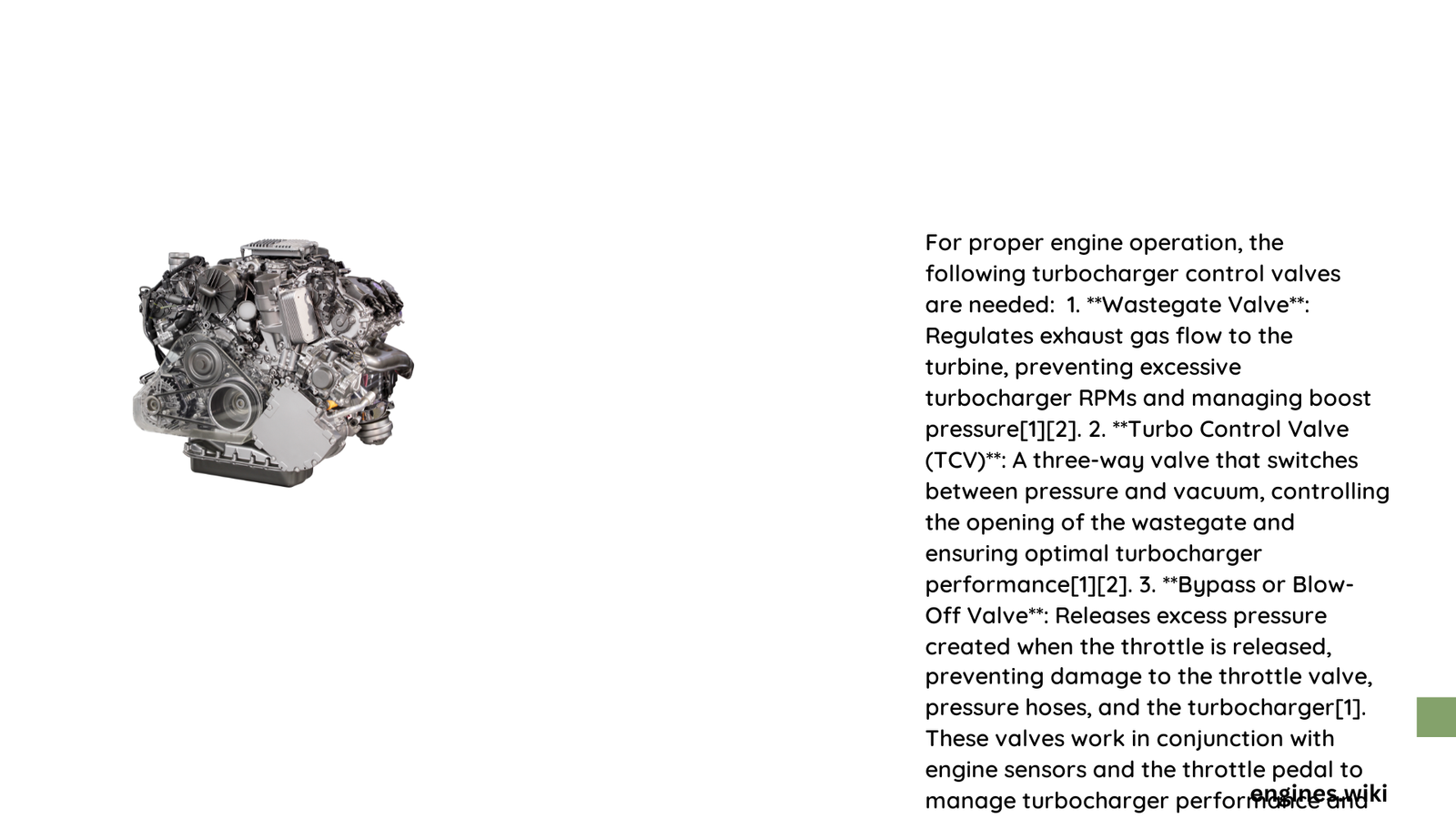Turbocharger control valves are sophisticated mechanical and electronic components that regulate air pressure, manage exhaust flow, and optimize engine performance across diverse operating conditions. These precision-engineered systems ensure efficient boost management, prevent turbocharger damage, and maintain consistent power delivery by intelligently controlling air and exhaust gas dynamics through advanced valve mechanisms and electronic control strategies.
What Are the Primary Turbocharger Control Valves?
Why Do Boost Pressure Control Valves Matter?
Boost pressure control valves are critical components that manage the compressed air entering an engine’s intake system. These valves prevent excessive pressure buildup, protect the turbocharger from potential damage, and ensure consistent engine performance.
Key Characteristics of Boost Pressure Control Valves
| Valve Type | Material | Pressure Range | Performance Capability |
|---|---|---|---|
| Mechanical | Stainless Steel | 5-100 PSI | High Durability |
| Electronic | Aluminum Alloy | 10-150 PSI | Precise Control |
| Pneumatic | Composite | 15-200 PSI | Adaptive Response |
How Do Wastegate Actuators Function?
Wastegate actuators play a crucial role in regulating exhaust gas flow around the turbocharger turbine. By controlling the bypass of exhaust gases, these actuators:
- Prevent excessive boost pressure
- Protect turbocharger components
- Optimize engine efficiency
- Maintain consistent power delivery
What Makes Variable Geometry Turbo (VGT) Control Systems Unique?
VGT control systems represent advanced turbocharger management technology, offering dynamic vane angle adjustments that:
- Optimize boost pressure across engine speeds
- Improve low-end torque
- Enhance overall engine responsiveness
- Reduce turbo lag
Why Are Electronic Boost Control Solenoids Important?
Electronic boost control solenoids provide real-time pressure management through:
- Precise electronic signal modulation
- Integration with engine control units (ECUs)
- Rapid response to changing engine conditions
- Continuous performance optimization
Technical Challenges in Turbocharger Control Valve Design

Designing effective turbocharger control valves involves addressing several complex engineering challenges:
- Material Durability: Withstanding extreme temperatures and pressures
- Precision Engineering: Maintaining consistent performance
- Electronic Integration: Seamless communication with engine management systems
- Cost-Effective Manufacturing: Balancing performance and production expenses
Performance Implications
Proper turbocharger control valve selection directly impacts:
- Engine efficiency
- Power output
- Fuel consumption
- Longevity of turbocharger components
- Overall vehicle performance
Maintenance Considerations
Regular inspection and maintenance of turbocharger control valves involve:
- Checking for wear and tear
- Verifying electronic sensor functionality
- Monitoring boost pressure consistency
- Replacing components at manufacturer-recommended intervals
Emerging Technologies
The future of turbocharger control valves includes:
- Advanced materials development
- Enhanced electronic control algorithms
- Predictive maintenance capabilities
- Integration with hybrid and electric vehicle systems
Conclusion
Selecting appropriate turbocharger control valves requires comprehensive understanding of engine specifications, performance requirements, and technological capabilities. Engineers must balance precision, durability, and cost-effectiveness to achieve optimal results.
